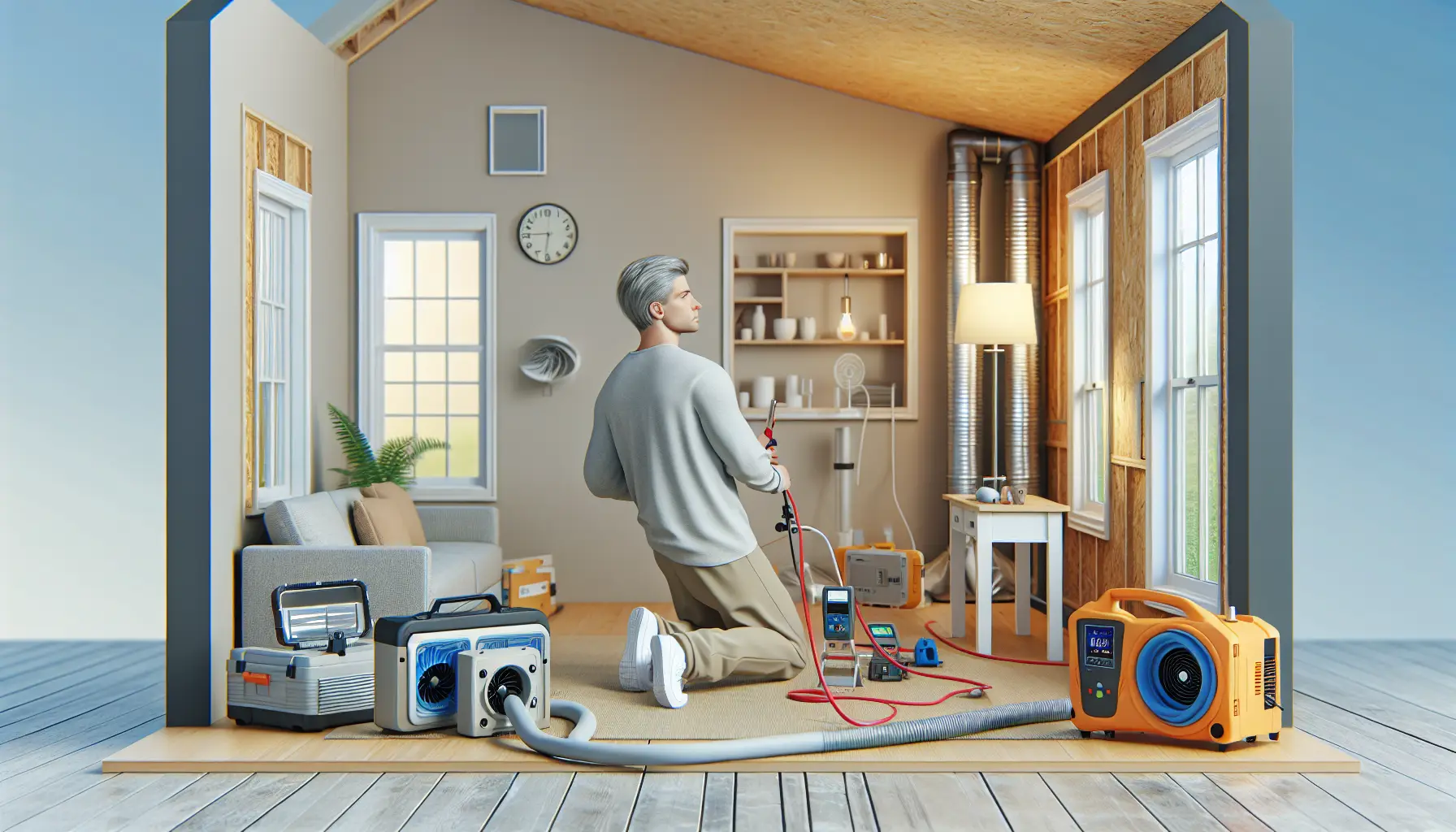Understanding Air Testing for Extensions
Air testing for extensions is a crucial step in ensuring your new home extension is energy-efficient and compliant with building regulations. An airtight home reduces energy consumption, improves indoor comfort, and prevents structural issues such as dampness and mould from arising. As a homeowner, it’s essential to grasp the importance of air testing and how to prepare for it effectively.
Why Air Testing for Extensions is Essential
Air testing for extensions measures how airtight a building is by determining the rate at which air leaks in and out of the structure. This testing is pivotal for several reasons:
- Energy Efficiency: Reducing air leakage helps in maintaining a consistent indoor temperature, cutting down on heating and cooling costs.
- Indoor Comfort: Enhanced airtightness ensures fewer cold drafts and maintains a comfortable living environment.
- Compliance: Meeting Building Regulations standards is legally required and achieving them can prevent future legal issues.
- Environmental Impact: Energy-efficient homes have a smaller carbon footprint, contributing to environmental conservation.
Steps for Air Testing Preparation for Home Extensions
Preparation for air testing can help ensure accurate results, saving you time and money in the long run. Here’s how you can prepare:
1. Seal Openings
Ensure all intentional openings such as vents and extractor fans are adequately sealed. Temporary seals can be used, which can be easily removed post-testing.
2. Check Doors and Windows
All doors and windows should be properly installed and closed during the test. Ensure there are no gaps, which can compromise the test results.
3. Inspect Building Fabric
Examine the building fabric thoroughly for any visible gaps or cracks and seal them. Pay special attention to joints and intersections of different materials.
4. HVAC Systems
Turn off all mechanical ventilation systems to avoid air movement that could affect testing.
5. Schedule Professional Inspection
Consider hiring professionals like Ratio Seven to conduct a preliminary inspection. This step can help identify potential issues before the actual air test.
Common Issues Found During Air Testing for Extensions
During an air test, several common issues could surface. Being aware of these can help you address them promptly:
- Poorly Sealed Gaps: Gaps around windows, doors and between building materials are common leakage points.
- Penetrations: Holes for pipes and cables often go unnoticed and unsealed.
- Incomplete Insulation: Proper installation of insulation material is crucial for airtightness.
Role of Ratio Seven in Air Testing for Extensions
At Ratio Seven, we specialise in providing comprehensive air testing services tailored to home extensions. We use state-of-the-art equipment and certified procedures to ensure your extension meets all required standards. Our team offers detailed reports and recommendations for improvement, ensuring a seamless and efficient process.
Air Testing for Extensions Summary
Air testing for extensions is non-negotiable for any homeowner serious about energy efficiency, comfort and compliance. Proper preparation and understanding of the process can go a long way in achieving the desired results. By addressing common issues and working with professionals like Ratio Seven, you can ensure your home extension is a model for airtightness.
FAQs

What is the purpose of air testing for extensions?
Air testing for extensions aims to measure the airtightness of a building, ensuring energy efficiency and compliance with building regulations. It helps identify air leakage points, offering an opportunity to address them and enhance the overall performance of the extension.
How is air testing for extensions conducted?
Air testing is usually conducted using a blower door test. A fan is mounted in a doorway, creating a pressure difference between the inside and outside. This setup helps measure how much air escapes through leaks in the building fabric.
How long does an air test take?
The duration of an air test can vary based on the size of the extension and its complexity. On average, a standard air test can take anywhere from 1 to 3 hours, including setup and teardown.
Can I perform air testing on my own?
While it’s possible to conduct a basic air test on your own, professional air testing services like those offered by Ratio Seven ensure more accurate and comprehensive results. Professionals have the experience and equipment to identify all potential leakage points effectively.
When should air testing for extensions be conducted?
Air testing should ideally be conducted after construction is complete but before making the extension fully operational. This timing allows for the identification and rectification of any issues without causing significant disruptions.
What should be done if the extension fails the air test?
If the extension fails the air test, a detailed report from the testing professional will highlight the problem areas. Address these issues by sealing gaps, improving insulation, and possibly scheduling a re-test to ensure compliance.
How often should air testing be conducted?
For extensions, air testing is usually a one-time requirement to meet Building Regulations. However, periodic re-testing can be beneficial, especially if you’ve made significant changes to the structure or if you experience issues like drafts or increased energy bills.
Is air testing only for new extensions?
While air testing is commonly associated with new extensions, it can also be beneficial for existing structures. Older buildings can benefit from improved energy efficiency and comfort through identification and sealing of air leaks.
Conclusion
Involving air testing in your home extension project is crucial for ensuring quality, efficiency, and compliance. The right preparation and understanding of potential issues make the process smoother and more effective. By partnering with experts like Ratio Seven, homeowners can achieve optimal results, ensuring their extensions are not only compliant but also comfortable and energy-efficient.




